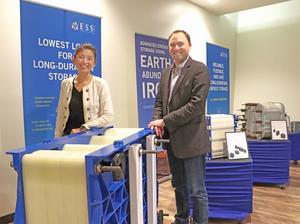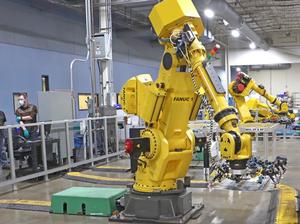
The special-purpose acquisition company (SPAC) planning to merge with Wilsonville battery maker ESS, transforming it into a publicly traded company, has set a shareholder vote for Oct. 5.
“The vote happens on the fifth and the closing happens within a couple of days after that,” ESS CEO Eric Dresselhuys said. “And then at that moment, with that final stroke of the pen on the closing, we become the surviving company, and we're the public company.”
ACON S2 Acquisition Corp. and ESS announced their IPO intentions in early May in a deal that valued the company at $1.1 billion.
Since then, Dresselhuys has hit the road to talk to investors and potential investors and appeared on industry panels. And ESS has been charging ahead on its growth plan, hiring some 50 new workers this quarter, swelling its ranks to around 165, with more to come.
“You name it, there’s hardly a department in our company where we don’t have opportunities,” Dresselhuys said. “People on the production floor, engineering talent, finance, accounting, administrative, you name it. Please, spread the word.”
ESS is among several companies getting investor attention for their varying technologies aimed at providing what’s come to be known as “long-duration storage” — grid-level energy storage beyond the few hours that lithium-ion batteries can muster.
In fact, ESS’s most prominent investor heading into the SPAC deal, Breakthrough Energy Ventures, recently joined in a $60-million fundraising round for a company that does a pumped-heat storage system. And Breakthrough is backing Form Energy, subject of a blow-out feature in The Wall Street Journal for its iron-air battery that promises to deliver energy for more than 100 hours.
ESS makes what’s known as a flow battery. It’s a decades-old technology that has struggled to gain traction, but ESS says it’s cracked the nut by figuring out a way to use non-toxic iron in its electrolyte solution.
Dresselhuys says he isn’t worried that the four to 24 hours of storage that ESS talks about providing might pale compared to the longer periods that Form and others claim. He says different market segments have different duration needs — and what ESS does hits a real and growing sweet spot for grid operators.
“If I had a 100-hour battery today, then you might ask me, ‘Well, who’s going to buy your 100-hour battery?’ The answer is: ‘Nobody.’ There are zero 100-hour batteries sold in the world today. There isn’t a market for it,” he said.
Form has a long way to go, he added.
“What they’ve announced, just to put it in perspective, is that after years and years of research and more money than ESS has spent in its life, they finally decided what they’re going to focus on,” he said. “They haven’t actually built it yet. ... They haven’t announced they have a product, there’s no commercialization date. So they’re not nearly as far developed or as commercialized as we are.”






